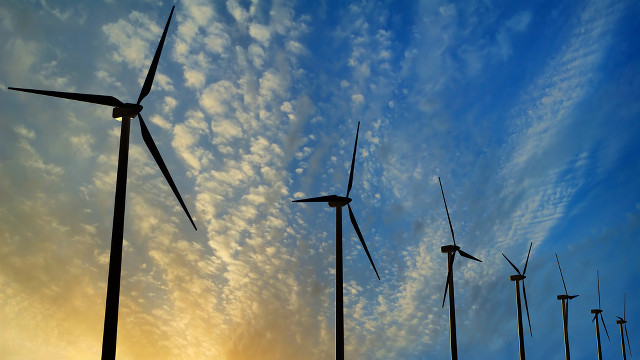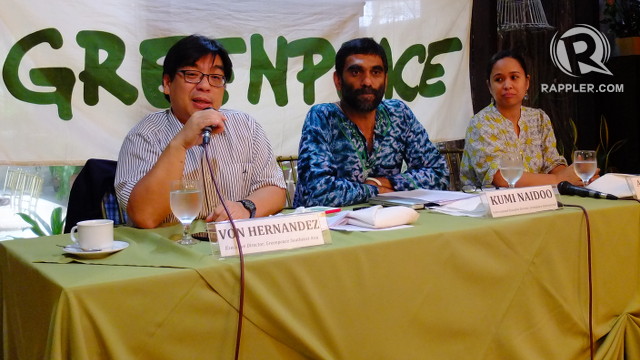SUMMARY
This is AI generated summarization, which may have errors. For context, always refer to the full article.

MANILA, Philippines – Communities in the Visayas are facing the possibility of spending Christmas without electricity after Super Typhoon Yolanda (Haiyan) struck.
So what put them in this particularly helpless situation? It’s their reliance on the centralized power grid, said Greenpeace Climate and Energy Campaigner Amalie Obusan during a press conference on Thursday, December 12.
Green groups are therefore urging rehabilitation czar Senator Panfilo “Ping” Lacson to install renewable energy systems instead of restoring old power lines that depend on the national power grid.
Decentralized renewable energy, an overlooked alternative, will make communities more energy-independent, the groups said.
“Because we rely on a very centralized grid, the moment power lines are down and affected by climate impacts like typhoons, distribution of power is also affected,” Obusan said.
Yolanda inflicted P2 billion worth of damage on power transmission lines and facilities, according to the Department of Energy (DOE).
Of this, P1.1 billion, or more than half of the damage, was incurred by the National Grid Corporation, the centralized source of energy for the entire country. Because Leyte, Eastern Samar, and Cebu rely heavily on the national grid, power supply in the worst-hit areas remain limited.
“We will seek an audience with Secretary Lacson to present our views on reconstruction. We hope he will adapt a more forward-looking vision of reconstruction,” said Greenpeace director for Southeast Asia Von Hernandez.
Visayas perfect for wind energy
A decentralized renewable energy (DRE) system is the generation of power very close or at the point of use. It involves a stand-alone system of power generation that is entirely separate from public networks or national grids.
For instance, a community can have a solar farm that converts sunlight into electricity. The facility is then connected to a local distribution network that powers houses and buildings in that community. The community can be as small as a few houses or as big as an entire suburb or city.
The type of renewable energy facility to be built in the community will depend on the natural resource most abundant there. Villages beside rivers can have hydro power plants. Provinces with large sugarcane plantations like Negros can have bioethanol plants that convert ethanol from sugarcane into energy.
In the case of Eastern Visayas, wind energy is the most ideal form of renewable energy.
“The higher interior terrain of Samar, Leyte, Panay, Negros, and Cebu are the best identified areas for wind. These areas are called the wind corridors of the Philippines,” said Obusan.
Wind corridors are areas where there is high potential for moving air parallel or along the ground, making it ideal for wind power development.
It is technically feasible for Visayas to generate more than 85% of its requirements from renewable energy by 2020, she added.
“All over the country, we have a solar potential of 4.5 to 5.5 kilowatts per hour (KWH) per day for every square meter of surface we have. And currently, the existing geothermal power generation in Visayas accounts for 50% of their power generation. Clearly, there is potential there.”
Benefits of DRE system
A DRE system is particularly suited for an archipelago like the Philippines where local government units (LGUs) and island communities are separated by large bodies of water.
With the present centralized power system, high-powered transmission lines are required to supply communities with power generated somewhere else. These create transmission costs shouldered by Filipino consumers.
Transmission costs are at P0.93 for every kilowatt-hour of energy consumption. That adds around P280 to the monthly electricity bill for an average Filipino household (300 KWH energy consumption), making the cost of electricity in the Philippines one of the highest in Asia.
In constrast, there are no transmission costs in a DRE system because the energy is consumed very near or at the place where it is generated. With the new pricing system of the DOE, the technology of renewable energy will add only P0.02 per KWH or P5.4 to the monthly electricity bill of an average Filipino household.
The national power grid is powered mainly by fossil fuels like oil, gas and coal which are mostly imported, adding even more to the cost of electricity. But with a DRE system, the community only pays for the one-time cost of installing the renewable energy technology (like solar panels or wind turbines) and maintaining the facility. The indigenous source of energy – sunlight or wind, for example – is free and abundant.
Ideally, LGUs should have a mixed DRE system that connects multiple types of renewable energy facilities.
For example, wind turbines will kick into action at night when solar energy facilities don’t have sunlight used to produce energy. The facilities should also have storage technology to bank extra energy when sunlight and wind are not available.
A DRE system also has huge potential to generate more local jobs in the community. It can generate up to 68,000 direct (employees directly involved in the operation of the plant) and indirect jobs (jobs created to cater to the direct employees) in the Philippines. One geothermal plant alone creates 2,582 jobs, according to a 2012 Greenpeace study.
With these benefits in mind, Hernandez emphasized that the rebuilding of Eastern Visayas can be an opportunity to replace inefficient, costly power systems with clean, sustainable ones.
Turning to renewable energy also helps avert the disasters that more and more frequently bring the Philippines down to its knees. Scientists all over the world have reached an overwhelming consensus that fossil-fuel-burning to produce energy is the leading cause of climate change.
Climate change leads to increasingly ferocious storms, debilitating droughts and storm surges. By leaving fossil fuel energy in favor of renewable energy, communities lessen the amount of emitted greenhouse gases that contribute to climate change. – Rappler.com
Wind turbine image from Shutterstock
Add a comment
How does this make you feel?

![[ANALYSIS] A new advocacy in race to financial literacy](https://www.rappler.com/tachyon/2024/04/advocacy-race-financial-literacy-April-19-2024.jpg?resize=257%2C257&crop_strategy=attention)


![[In This Economy] Can the PH become an upper-middle income country within this lifetime?](https://www.rappler.com/tachyon/2024/04/tl-ph-upper-income-country-04052024.jpg?resize=257%2C257&crop=295px%2C0px%2C720px%2C720px)

There are no comments yet. Add your comment to start the conversation.